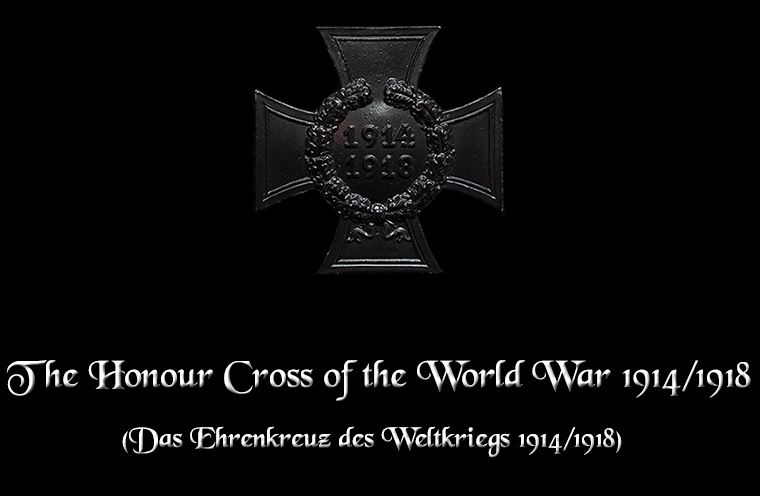

The Honour Cross of the World War 1914/1918 (Das Ehrenkreuz des Weltkriegs 1914/1918), commonly, but incorrectly, known as the Hindenburg Cross.
To commemorate the distinguished deeds of the German people during WWI, the Reichspräsident, Generalfeldmarschall Paul von Hindenburg, established through the order of 13th July 1934, the "Honour Cross for Participants in the World War 1914/1918" and for the Next-Of-Kin. This was Germany's first official service medal for soldiers of Imperial Germany who participated in World War I. It was also the first decoration created by the Third Reich.
The Honour Cross was awarded in three forms
For combatants ((Frontkämpferkreuz) - number awarded = 6,202,883
For non-combatants (Ehrenkreuz für Kriegsteilnehmer) - number awarded = 1,120,449
For widows (Ehrenkreuz für Witwen) - number awarded = 345,132
For parents (Ehrenkreuz für Eltern) - number awarded = 372,950
Total 8,041,414
For combatants (Frontkämpferkreuz)
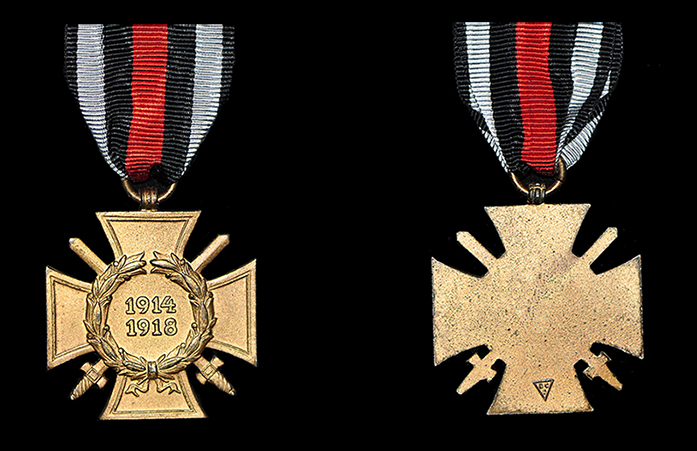
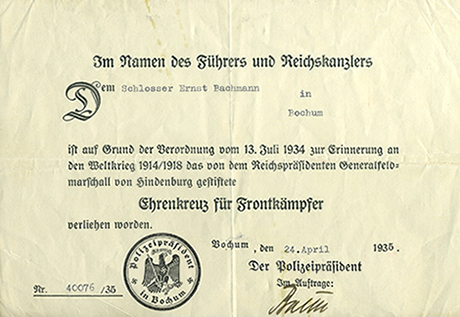
Award document for combatant
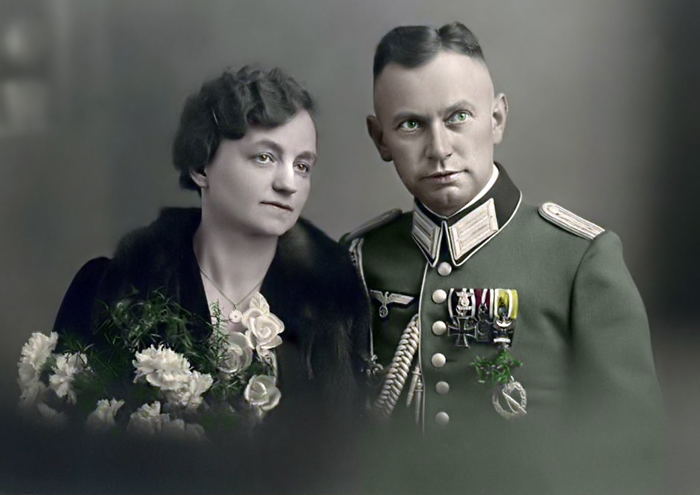
Parade bar showing the cross for combatants
For non-combatants (Ehrenkreuz für Kriegsteilnehmer)
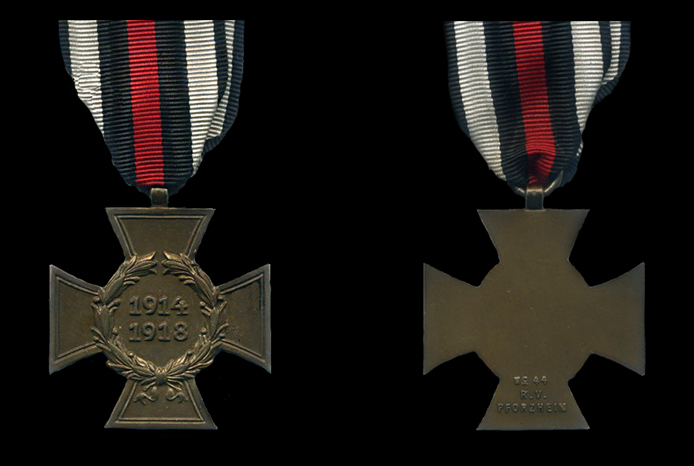
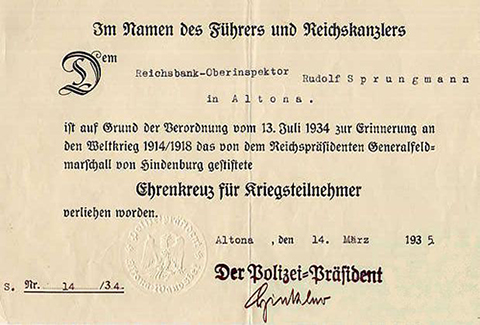
Award document for non-combatant

non-combatant cross in wear
For Next of Kin (Ehrenkreuz für Witwen/Ehrenkreuz für Eltern)
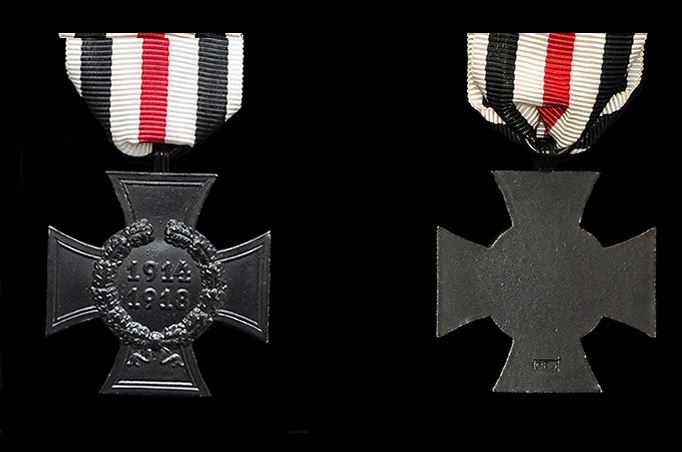
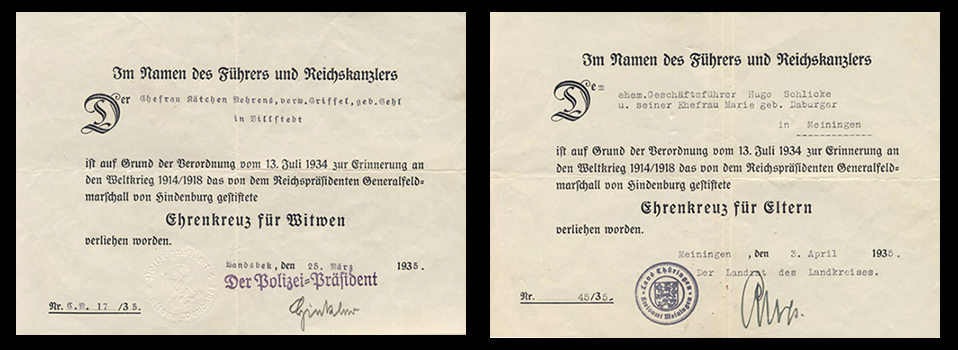
Award documents for next of Kin: left - Widows. right - Parents
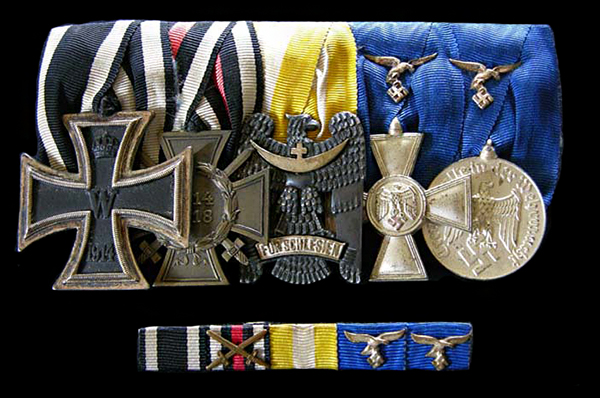
Luftwaffe parade bar showing the The Honour Cross of the World War 1914/1918 with corresponding ribbon bar
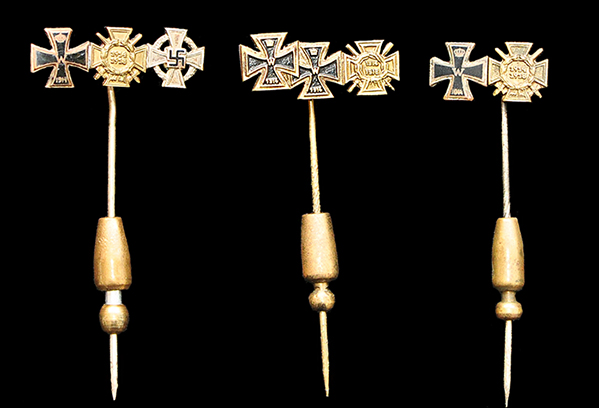
Lapel pins for civilian attire
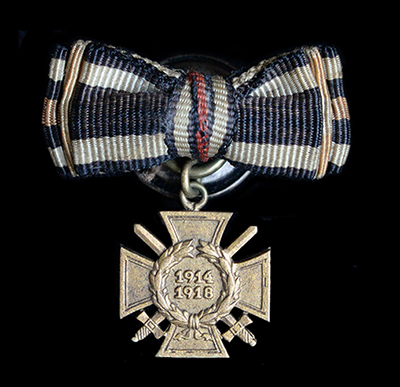
Lapel buttonhole group for civilian attire with combatant Honour Cross mini